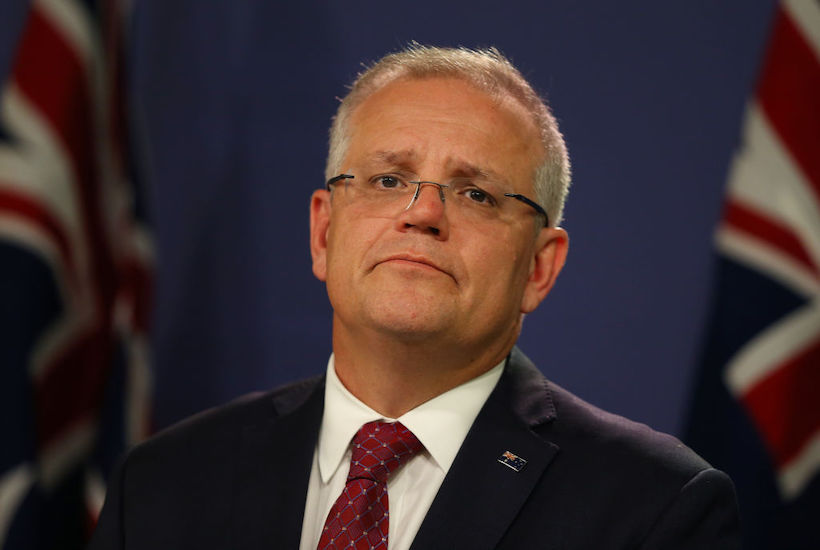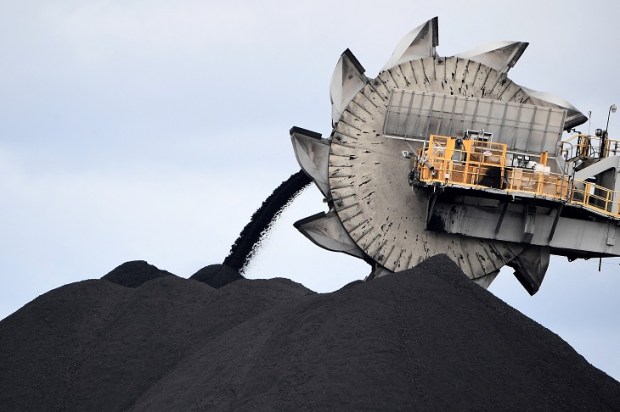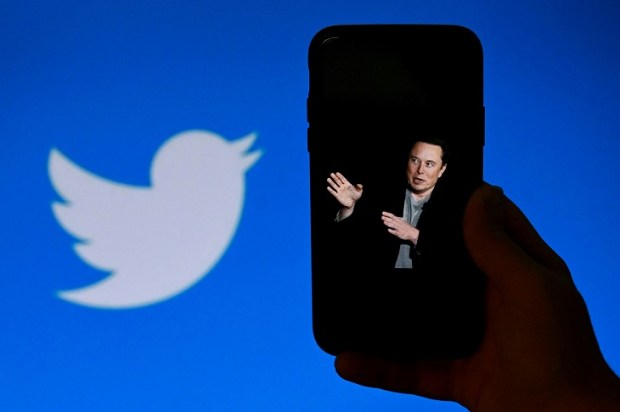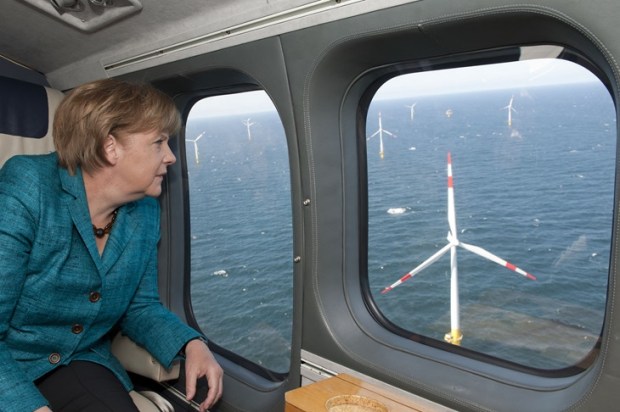Hello August 2021, that disappointing sequel to 2020. Or perhaps we’re actually in the 20th month of 2020 – Augustember. Whatever’s the case, there’s no longer any talk in the corridors of Canberra of an early election. What might have been had COVID been a one-hit-wonder or had the federal government managed to handle the pandemic better is no more.
It’s virtually guaranteed that the Morrison Government will now go full term, which means an election sometime between March and May 2022, giving itself the maximum time possible for something positive to happen between now and then that might prove a circuit breaker in the current spiral of negativity – such as finally getting the pandemic under the control. With our luck, though, we’re more likely to be looking at the Iotta or Kappa varieties in the second quarter, with the Xi strain to hit around Christmas 2022 (although in some way every strain of COVID has essentially been the Xi strain).
I always thought that the reelection of the government in 2021 (or 2022) would be far from certain. My reasons revolved around the lack of any discernable political agenda or an ideological direction by the ScoMo administration, combined with the abandonment of fiscal responsibility (and that was before COVID), and, from a sheer numbers point of view, the paper thin majority and the consequent necessity to actually win extra seats without losing more.
Then, of course, came corona, and the rest is history – or will be soon. A year and a half into flattening the curve, and I’m even more pessimistic than before. Let me count the ways:
1. States good, Feds bad
For whatever set of reasons, a new political calculus has developed, which, I fear, might now be past the point of turnaround. Namely, State government (of either persuasion) have been reaping all the political benefits from the pandemic, while Canberra has been associated with bad news and screw-ups. Thus, our Premiers have by and large been seen by significant majorities as saviours, protecting our grandmas from the virus and the selfish minority who want to kill them. This has held true through all the border closings, hard and soft lockdowns, mask mandates and any other restrictions state health bureaucrats were able to think of.
No doubt the Premiers have benefitted from the federal government trying to buy the way out of the economic pain through Jobkeeper and other forms of support, but it’s only part of the answer. In any case, the Feds aren’t necessarily getting the thanks for making the money printer go brrrrr in the first place, but they are certainly getting blamed for turning off the taps after a certain point. Which just illustrates my point – whether it’s the economy or the borders or the vaccines, ScoMo can get no love. Which makes him frustrated and angry, which in turn makes this already charisma-free individual increasingly unappealing to the public.
2. We’re all in this together, but some animals are more equal than others
Let’s face it, the economic pain from COVID – or rather the government responses to COVID – has not been shared evenly at all. If you are on the public payroll, as more and more Australians increasingly are, or if a substantial part of your income derives from government payments and support of one kind or another, as again is the case for more and more Australians, COVID really doesn’t matter. Quite the opposite.
The pandemic has given public servants (more than any other job sector) the opportunity to “work” from home. So not only has your paycheck been completely fine hell or high water or Delta (if not actually better, since we have seen a number of public sector pay rises in the past 18 months; probably a compensation for all the pain and suffering and stress connected with saving Australia) but your lifestyle has arguably improved, at least judging by the number of those unhappy to stop telecommuting. Of course the public servants and the government support recipients are two demographics which already lean heavily towards Labor and the Greens.
“The laptop class” of professionals in the private sector who likewise a) still have jobs, and b) can perform them from anywhere with an internet connection is probably evenly split electorally. By contrast, the hardest hit by lockdowns and border closures are those in the traditional Coalition base: business people, particularly small and micro business owners, a lot of whom have seen their dreams destroyed and livelihoods go to the wall or are at the very least are seriously struggling. These people, a small minority in the greater scheme of things to be sure, but not an insignificant one, find it hard to believe the Federal government’s pronouncements about how well the economy is really going.
3. Do tread on me
Australia has never particularly been a libertarian polity. Mateship trumps rugged individualism. Whether as a nation of convicts –- or, as someone has remarked recently, a nation of prison guards -– the state has always played a much larger role in our society and has certainly enjoyed much more general support.
What the pandemic has revealed though is just how much Australians value safety and security over freedom, and if that’s an unfair characterisation of the binary (after all, what the governments are doing is for “good reasons” – to protect us – and not because some ideologically-driven power-hunger (I’m loosely quoting governments themselves here)), then let’s put it this way: the pandemic has revealed just how passive, compliant, reliant and authoritarian the majority of the population is. It helps if you don’t have skin in the game (see the point above), but this does not explain the whole phenomenon.
On the other hand, those more mindful of liberty, a less intrusive and powerful government, fiscal responsibility, cost-benefit analysis, rational risk assessment etc. are clearly in the minority in Australia – but they are also traditionally part of the Coalition base (as well as a few very minor parties) and they are seething at the performance of the Federal Government (as well as, where applicable, the Liberal-run State governments).
4. The policy non-manifesto
This brings me to another issue, one that has been on the boil for some time now, but like many others, has crystalised further in the heat of the pandemic, namely the question what does the Liberal Party stand for anymore? Arguably, Liberals are not a party of small government anymore. They’re not a party of fiscal responsibility and good economic management anymore either, having presided over the past 8 years over a monumental blowout in government debt (John Howard and Peter Costello must be crying themselves to sleep every night) and virtually unrestrained spending. There is certainly no one in either the Cabinet or the Party Room making any arguments for fiscal restrain. Quite the opposite; apparently this time we really are all Keynesians (though the modern Keynesianism has always been a half-Keynesianism, joyful in deficit spending during bad times, completely uninterested in accumulating surpluses during good times, as has been John Maynard’s original vision).
On cultural issues, there is but a feeble pushback, if any, against the triumphant march of identity politics and wokeness. The Liberal Party’s traditional advantages in national security and immigration don’t count anymore, at least at the moment, because immigration, legal or illegal, is not an issue (citizens can’t even travel, for goodness’ sake) and while China might yet rise to play the part the Soviet Union played during the Cold War or the Islamist terrorism during the War on Terror, but is not quite there yet in the public consciousness.
5. Vote for us, we won’t be quite as bad as Labor
The apparent lack of core beliefs (political survival and managerialism don’t count) in turn translates into an inability to sell the voting public any particular vision for the government, and give them reasons to vote for the Coalition rather than the other mob. Having abandoned any tangible commitment to smaller government, less spending, less debt and so on, Liberals have trashed their historically main advantage over and point of differentiation with the left.
How can anyone in the Morrison government argue with a straight face that they are a party of good economic management while Labor will spend, spend, spend, and drive Australia into debt? Sure, as in we will spend only $200 billion while those economic vandals on the left will blow out the budget with their irresponsible $205 billion promises.
To the extent that the next election will be all about COVID, the Coalition has the basic problem I mentioned at the outset: they seem to get none of the credit but all the blame, whether deserved in any particular circumstances or not. Morrison will no doubt run the campaign on the theme that the Coalition saved Australia from the worst of the pandemic – just look at the rest of the world, and compare the death toll or the economic performance. Our polices have saved 30,000 lives, is one claim already being made.
Whether government policies are to be given the main credit or the fact that we are an island nation that has largely shut its borders (though, to be fair, that itself is a government policy) is one question. Another one is whether the punters will appreciate the real or the apparent Fed successes in the context of our nation having been remade as “the kingdom when no one dies” and sickness is now against government policy.
When you accept the goal is eradication, anything less than that is seen as a failure, whereas most other governments around the world which committed themselves to trying one way or another manage the virus can claim success when they simply minimise loss and damage.
6. Waxed, unvaxxed and dangerous
This is the real Achilles’ heel of the government; everything else could have been forgiven or overlooked if the rollout worked. Vaccination was going to be the solution to all our COVID problems; instead, it turned out to be another COVID problem. Manufacturing our own vaccine is actually a great idea – having a sovereign capability in this area means being able to make our own destiny. Alas, no matter how good your plan sounds, you should always have a plan B. Diversifying risks and not putting all eggs in one basket, and all that jazz.
ScoMo and his government bet the house on Astra Zeneca and here we are, with our pants down and the second-lowest vaccination rate in OECD (thank you, South Korea for picking up the wooden spoon the other day, a good friend and ally that you are). Having said that, what has been done to the AZ vaccine by our politicians and health experts borders on criminal. In fact, we are fast approaching the point in time when every new COVID death in Australia will mean the blood on the hands of those doctors and bureaucrats who have been telling everyone not to take AZ because it’s too risky, and wait for Pfizer instead.
The largely innumerate population, lulled into the new normal where no risks are to be tolerated and trade-offs don’t exist anymore, have been quite receptive to the message, choosing to ditch a perfectly good vaccine over a Lotto-style odds of harm. The messaging from the authorities, including the federal ones, has been appalling over the course of the pandemic. When we’re lucky not to be on the receiving end of scare-mongering, incoherence and anti-marketing (get vaccinated but you will still have to wear mask, be subject to lockdowns, have to socially distance and won’t be able to travel) and finally get the answers we have all been waiting for, they are likely to be along the lines of Morrison’s new plan to get Australia back on track.
So while we have some of the lowest vaccination rates in the developed world, we also now have some of the most unrealistic future targets, like no more lockdowns once 70 per cent vaccinated, and international borders reopened at 80. Short of making vaccinations compulsory, it will be almost impossible to get to 70, much less 80, simply because a significant minority of people doesn’t want to get vaccinated for a variety of reasons. Even the best-performing countries like Canada, the UK, and the US are currently in their 50s (plus a small number with one shot only so far), with interest and uptake declining.
7. No margin for error
With 76 Coalition MPs, ScoMo has a working majority of one against 68 Labor and 8 on crossbenches. Even if the government was doing much better than it is, what are the odds of winning extra seats while at the same time not losing more elsewhere?
Sure, there are plenty of Labor marginals that don’t require all that many votes to swing, but that would actually require the government to get a swing towards. And it’s difficult to see Queensland once again punching above its weight and going over and above recent high watermarks for the LNP. At the same time, considering the drubbing that the Liberal Party received on the state level in Victoria and Western Australia recently, one would have to be concerned about the Coalition marginals. Labor only needs to pick up eight seats to govern in its own right, fewer still for a minority government, possibly as few as two or three.
Is Labor a more attractive proposition for the people of Australia? Is Albo a credible alternative prime minister? (assuming he won’t be in the next few months pushed under the bus by Bill Shorten or Tanya Plibersek) It doesn’t really matter. As the old saying goes, Australians vote against the government and not for the opposition. Labor might not have any better answers or be able to do better in practice, and yes, they will spend even more money the government doesn’t have, but the swinging voter might nevertheless still take the risk just for the sake of change and something different.
It might even come down to a vote as a magical ritual: banish the Coalition and maybe COVID will disappear too. Whichever way we vote next year, we’re going to get it good and hard. And then there is the Xi variant to look forward to.
Happy Augustember everyone.
Arthur Chrenkoff blogs at The Daily Chrenk, where a version of this piece also appears.
Got something to add? Join the discussion and comment below.
Get 10 issues for just $10
Subscribe to The Spectator Australia today for the next 10 magazine issues, plus full online access, for just $10.


























Comments
Don't miss out
Join the conversation with other Spectator Australia readers. Subscribe to leave a comment.
SUBSCRIBEAlready a subscriber? Log in